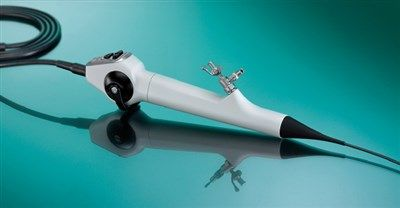
Endoscopy Market to Eclipse $12 billion
Endoscopes and accessories are becoming more and more common in healthcare. These devices are useful tools for a growing variety of health concerns.
Mon Jan 05 2015
Endoscopy market to eclipse $12 billion
Endoscopes and accessories are becoming more and more common in healthcare. These devices are useful tools for a growing variety of health concerns. The United States is a leader in the endoscopy market and it is a market that experts predict will grow over the next several years.
“The U.S. market for endoscopes will not only continue to dominate the global endoscopy market, but is set to increase its share of the market over the next few years, from 43 percent in 2013 to over 55 percent by 2020,” says Andrew S. Thompson, Ph.D., GlobalData’s Senior Analyst covering medical devices. “The global endoscopy market, estimated to be worth over $6 billion in 2013, consists of a wide range of endoscopes that are used to visualize specific areas throughout the body and to aid in surgical procedures, as well as endoscopic reprocessing units, endoscopy fluid management systems, and endoscopy visualization systems. It is expected to increase to $12.6 billion by 2020.”
Colonoscopes are an import area of the U.S. market and will continue to drive growth.
“The increasing U.S. share of the global endoscopy market is being driven mostly by a continuing high demand for colonoscopies,” Thompson says.
In 2013, colonoscopes accounted for 16 percent of the U.S. endoscopy market revenue, which is forecast to increase to 43 percent by 2020, according to Thompson’s report. In contrast, over the same time period, European sales of colonoscopes are expected to increase by just 3 percent from 10 percent to 13 percent. Other regional markets will follow the same trend as Europe.
Screening practices in the United States and reimbursement levels for colonoscopies will aid in the growth of the market.
“In addition to an increase in the incidence of colorectal cancer (CRC), the major driver of the rising sales of colonoscopes is increased screening for the disease among middle-aged individuals, which can be either organized or opportunistic,” Thompson says. “Europe and Japan generally use an organized system of screening, where a colonoscope is used to diagnose problems identified during a simple screening test, typically through the detection of blood in stool samples. In contrast, the U.S. follows an opportunistic screening process; while the U.S. guidelines define a screening process using the same simple tests as in the rest of the world, patient aversion to fecal testing, coupled with continuing reimbursement for colonoscopy for screening purposes, has meant that U.S. physicians have increasingly resorted to colonoscopies in an effort to provide a basic level of CRC screening.”
“In addition, healthcare reforms instituted by the Affordable Care Act (ACA) ensure that the cost of a biopsy of a polyp found as a result of a screening colonoscopy will remain fully covered by insurance,” Thompson reports. “While promising new molecular tests to screen for CRC have been introduced by Exact Sciences and Epigenomics, uncertainty regarding regulatory approval, the frequency of testing, reimbursement, and the cost of these tests means that colonoscopy is expected to remain the favored means of CRC screening in the U.S. for the foreseeable future.”
Click here to read the entire article on Medical Dealer.

